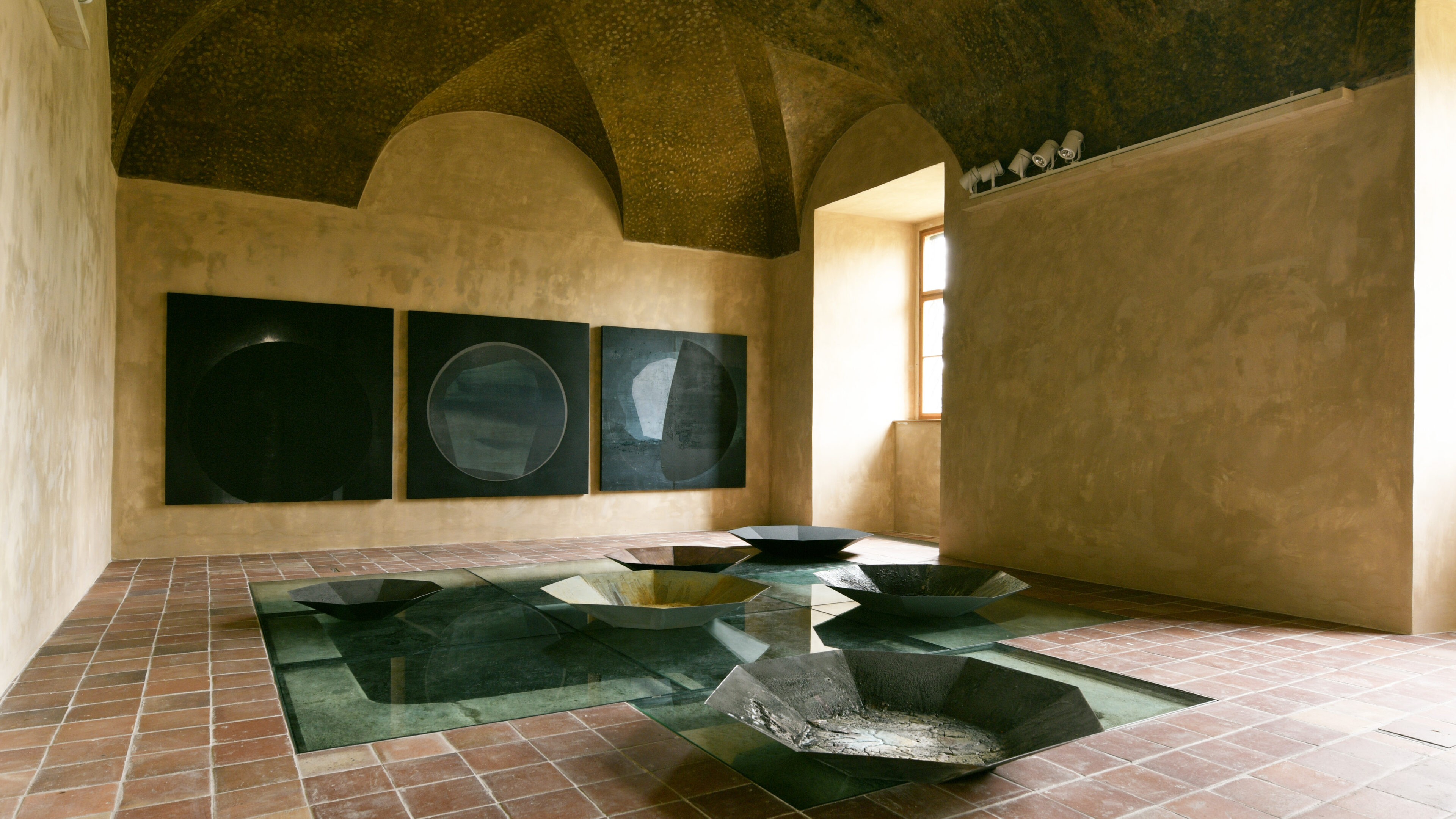The Latin term Stella Maris – sea star – is closely associated with the Virgin Mary as the protector of sailors or the Gate of Heaven.
03. 10. 2021

The Latin term Stella Maris – sea star – is closely associated with the Virgin Mary as the protector of sailors or the Gate of Heaven.
The Latin term Stella Maris – sea star – is closely associated with the Virgin Mary as the protector of sailors or the Gate of Heaven. Šubrtová’s choice of title for her exhibition beneath the Baroque vaulted ceiling of the Experimental Space with its historical pool is a metaphor for the mirroring of a distant universe and the hidden nature of the earth. Her paintings exploring cyclical events in the cosmos (Ultraspaces) are here juxtaposed with objects whose elemental structures of matter bring together the micro- and the macrocosm (Dark Places of the Future). Her objects in the shape of regular polygonal bowls bear the Marian symbols of stars and water, but inside them play out a partially controlled processes of liquid matter. Using the chemical reactions and interactions of various colors and other materials, and working with different drying times, she creates dynamic structures that imitate chemical processes found in nature. Her articulated drawings in matter evoke a number of associations. They recall satellite images of the Earth’s surface or the arid landscapes of other planets, but also resemble the microscopic structure of minerals. The first of these objects was made two years ago on the basis of her personal experience while looking over the Roșia Poieni valley in Romania, which was flooded with polluted water from a copper mine. Šubrtová has long explored the postindustrial landscape and is interested in processes of transformation and the influence of man, whose activities affect the Earth’s global system. She observes natural processes and has a sense of Earth’s fragility within the universe, its constant exposure to threats from without and within. The second part of the exhibition, Starry Sky in the Underground, follows on an older project, Salve vale. Located in the gallery’s basement spaces, this projection of the nighttime sky in the underground calls attention to the ambivalent concepts of inside and outside and explores the relationship between up and down, far and near, and microcosm and macrocosm.
DAGMAR ŠUBRTOVÁ (born 1973 in Duchcov, lives in Kladno)
Šubrtová studied glass arts at the Art Institute of Jan Evangelista Purkyně University in Ústí nad Labem in 1993–1994and sculpture under Kurt Gebauer at the Academy of Arts, Architecture and Design in 1994–2000, where she worked as assistant professor in 2003–2013. She held her first solo exhibition in 1992 and has created a number of art installations. She is also active as a curator. In 2002–2010, Šubrtová ran the Mayrau Gallery at the former Mayrau mine in Vinařice near Kladno, where she has regularly created art interventions along the tour route. In 2000–2020, she was a curator at the Makráč Gallery, the exhibition hall of the Czech Academy of Sciences’ Institute of Macromolecular Chemistry in Prague’s Petřiny district. In the town of Kladno, she has worked to make the Válová sisters’ home open to the public. In 2015–2017, she was the main coordinator of the international Frontiers of Solitude project, which focuses on devastated landscapes.
In her work, Šubrtová works on the basis of the sculptural medium, which offers her a solid foundation for thinking in three dimensions, but she moves freely within numerous other media such as object art, installations, and photography. Her art reflects the environment in which she lives, and she works with the concept of local identity and cultural, historical, and social influences. She also occasionally collaborates with scientists from the natural sciences and humanities.